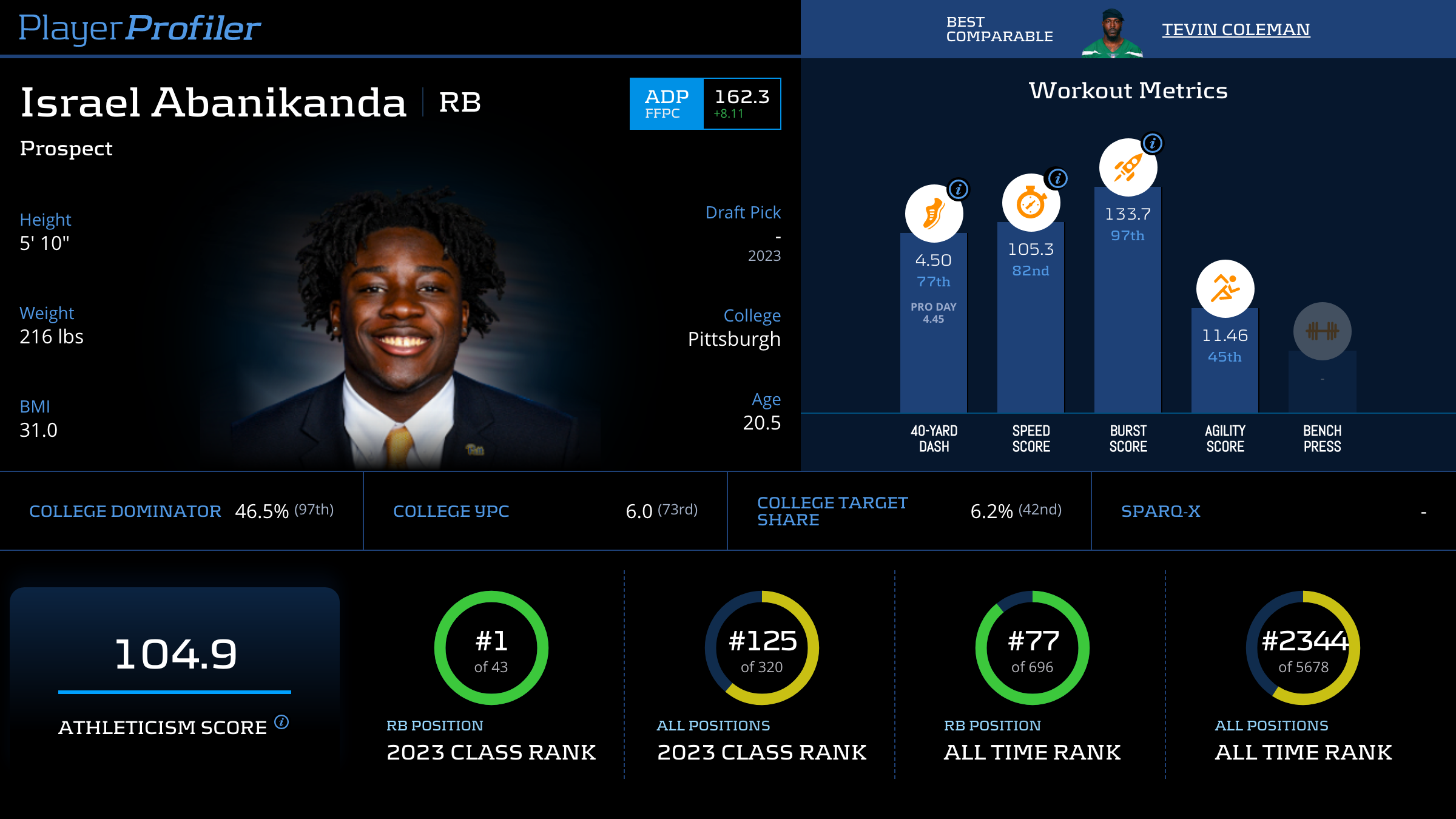The goal of this article series is to use the events of the NFL season to contextualize what dynasty players should be doing to prepare for the eventual start of the 2023 season. We discussed in the first article in this series actions to take to organize and self-scout your dynasty team to maximize your ability to make moves this offseason. Hopefully, you’ve been making moves inspired by your preparation throughout the offseason. This article discusses the Dynasty Fantasy Football Strategy you need to know to prepare for your upcoming rookie drafts and where to potentially find some values during this time of the NFL offseason.
Finalizing a Pre Draft Understanding of Incoming Rookie Class
With athletic testing done and with the NFL draft just around the corner, we have almost all the pieces we need to evaluate the dynasty value of the incoming rookie class. Below are some of the important factors to keep in mind when assessing the incoming rookie class.
Contextualizing College Performance and Pro Day Results
There are a multitude of metrics to consider when evaluating prospects in Dynasty Fantasy Football. The relevance of those metrics vary from position to position. This is quick breakdown of some of the key metrics I look at when assessing incoming prospects.
For wide receivers your evaluation should be focused primarily on their college production. Specifically, receivers with a high percentile Breakout Age, and high percentile College Dominator Rating tend to fair better as fantasy producers. For example, 75-percent of the wide receivers who finished inside the top 24 at the position in fantasy points per game had Breakout Age above the 50th percentile. Additionally, 19 of those same 24 wide receivers posted an above average Dominator Rating.
College Target Share and Speed Score
For running backs College Target Share and Speed Score are key metrics to focus on when considering prospects for Dynasty Fantasy Football. The bulwark of fantasy production at the running back position is centered on those running backs that can both catch passes and use their speed to create chunk plays out of the backfield. Of the top 24 running backs in fantasy points per game last season, only six had a Speed Score lower than 100 and just over 70-percent had a College Target share above the 60th percentile.
When it comes to tight ends, Speed Score and College Dominator are good indicators of NFL success. Of last years top 12 tight ends in fantasy points per game, only three players had a Speed Score less than 100, with 75-percent of the tight ends posting a 73-percentile College Dominator or better.

But with this said, these are just some threshold numbers, and there are outliers. It is important to contextualize how these numbers came about. PlayerProfilers Rookie Guide does a great job taking a deep dive on these prospects and providing the proper context for their college performance.
Further, PlayerProfiler adjusts all Pro Day 40 yard dash times by .05 seconds, as historical data suggests that this is a more accurate assessment of how a prospect would have ran at the NFL Combine. See Israel Abanikanda‘s profile as an example.
Deciphering the Fragility of Prospects
Another important factor to consider is the effect landing spot and draft capital will have on a prospects dynasty value. For example, of the 60 players who made up the top 24 wide receivers, top 24 running backs, and top 12 tight ends in fantasy points per game, three wide receivers, five running backs, and three tight ends had Day 3 draft capital.
In other words, slightly over 81-percent of the players who finished at the top of their position in fantasy points scored had at least Day 2 draft captial. PlayerProfiler’s Mock Draft Index helps account for where these prospect may land based on NFL mock drafts. You can also review where each individual mock has the player being selected in order to fully understand the potential range of outcomes of draft capital for each prospect.
Tiering the Rookie Draft:
After you consider all these factors its best to try to assign rookie pick value to these players and place them into tiers. You need to figure out where these players are going in rookie drafts. You should consult your league draft history and try your hand in a mock draft. Mock Draft Live provides great insights into where these prospects go in drafts. The Sonic Truth Podcast also did a recent mock draft.
In addition to mock drafting, you should create your own dynasty rookie pre-draft ranks. PlayerProfiler does all this hard work for you with its dynasty rookie rankings, available through the Dynasty Deluxe package.
Veteran Values
A lot of attention is spent on the incoming rookie class. Therefore, now is a great time to acquire cheap veterans. For example sending late round rookie picks for players like Dalvin Cook, Joe Mixon, or Ezekiel Elliott may sound gross, but it will produce dividends when the season starts. Those veterans produce fantasy points. A player you take with a late rookie pick is most likely a player stashed on a taxi squad or eventually lands on the wavier wire. You should be on the look out for teams that may be cutting players in anticipation to the NFL Draft. It’s important to be aware of your league’s activity and be ready swoop in and get those players to extract some extra value.
We’ll discuss this more after the NFL draft. Look for the next part of this series at that time.


